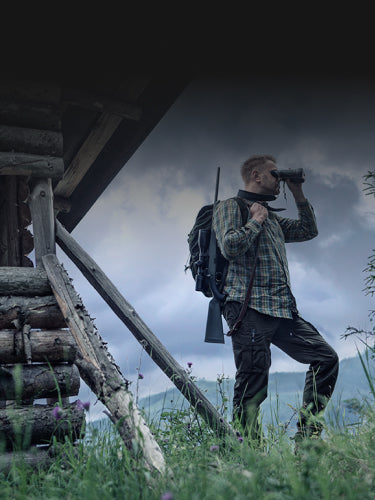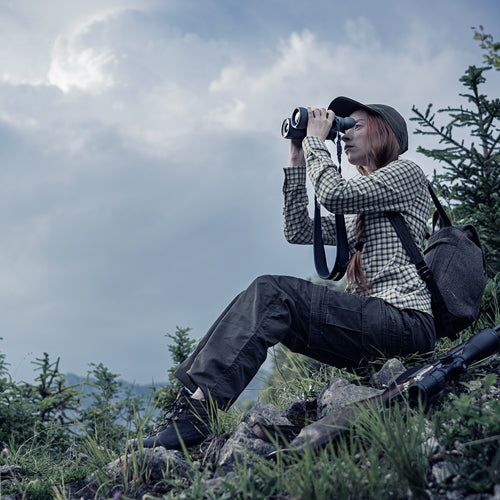It was a warm Texas Friday afternoon in late October. Expecting deer to come out in 85° heat was wishful thinking, but I was, hanging out in the hunting stand. I sat patiently, like a bachelor waiting for a girl that I didn’t make the best first impressions on. There was no guarantee that I wouldn’t be stood up.
Yet, after hours of silent waiting, they showed up – two fine looking does, both about two years old, walked up to the feeder just before legal shooting light ended.

Some might be wondering why I chose to use thermal binoculars on a daytime hunt. The fact of the matter is the Merger LRF XP50 isn’t limited by the time of day. Since it’s a pair of thermal binoculars and not night vision, the daytime world won’t be washed out in brightness like it would be if viewed through a pair of PVS-14s.
Instead, the Merger LRF XP50 defeats any natural camouflage animals may be using to hide in whatever environment you might be hunting in. With its high resolution 640x480 sensor, no creature is too small for the Merger to detect.

Despite its size, this tiny bird appears clear through the Merger’s viewfinder, while the integrated rangefinder is sensitive enough to determine its range. All this in full sunlight.
Built with an intuitive interface, the Merger’s various controls are quick to learn and easy to access. The rangefinder is toggled with the press of a button and is capable of detecting objects up to a thousand yards away, more than enough for any rifle hunter.
The Merger’s rangefinder is usable in both single measurement and scan mode. In single measurement, the user taps the Merger’s LRF button to measure the distance of a single distant object. In contrast, Scan mode keeps the Merger LRF laser on and measures the distances of all the objects its laser touches.
Unlike digital night vision, which converts ambient light into a digital image, thermal works by detecting long-wave infrared, which is emitted by all objects, both living and non-living. Since thermal can see at higher wavelengths than night vision, it can also see through smoke and fog, so a misty morning means nothing to the Merger.
Precise, practical, and highly versatile, Pulsar’s Merger LRF XP50 pro is perfect for daytime hunting due to its ability to pierce through fog and defeat camouflage as well as its long distance rangefinder.
Would you use digital thermal imaging in the daytime? Tell us why or why not in the comments.




